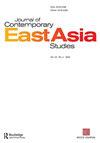ASEAN’s initiatives for free trade in East Asia under AEC
IF 1.4
Q1 AREA STUDIES
引用次数: 4
Abstract
ABSTRACT The greatest achievement of ASEAN’s intra-regional economic cooperation since its inception in 1976 is the realization of the ASEAN Free Trade Area (AFTA), which started with tariff cuts in 1993. AFTA was completed in January 2018 with the elimination of intra-regional tariffs. The AFTA itself is an FTA of an unusually high standard internationally, with the level of liberalization exceeding even that of the TPP 11. However, when examined from the aspect of utilization, in the case of Thailand’s exports to ASEAN, more than 30% do not use AFTA for one reason or another. This indicates that there are points of improvement in the system of the AFTA and in the customs procedures that are indispensable in using the AFTA. Furthermore, some member countries have introduced non-tariff barriers to protect their domestic industries while eliminating tariffs, which is contrary to the principles of AFTA. ASEAN has been expanding the scope of its economic cooperation since 2008 with the aim of establishing the ASEAN Economic Community (AEC), but even so, what the industrial world is seeking in the “post-AFTA” periods are trade-related measures such as the “facilitation of customs procedures” and the “elimination of non-tariff barriers.” Nowadays, when mega FTAs such as RCEP and TPP11 is being constructed one after another, ASEAN needs to transform itself into the most advanced regional cooperation organization in terms of liberalization level, scope, and rules if it is to maintain its centripetal force for direct investment.东盟在东盟经济共同体框架下的东亚自由贸易倡议
自1976年成立以来,东盟区域内经济合作的最大成就是实现了东盟自由贸易区(AFTA),并于1993年开始削减关税。东盟自由贸易协定于2018年1月完成,取消了区域内关税。东盟自由贸易协定本身在国际上是一个标准异常高的自由贸易协定,其自由化程度甚至超过了TPP。然而,从利用的角度来看,以泰国对东盟的出口为例,超过30%的泰国由于这样或那样的原因没有使用AFTA。这表明东盟自由贸易协定的制度和使用东盟自由贸易协定所不可缺少的海关程序都有改进之处。此外,一些成员国在取消关税的同时引入非关税壁垒以保护其国内产业,这违背了非洲自由贸易协定的原则。自2008年以来,东盟一直在扩大其经济合作的范围,旨在建立东盟经济共同体(AEC),但即便如此,工业世界在“后东盟自由贸易区”时期寻求的是与贸易有关的措施,如“海关手续便利化”和“消除非关税壁垒”。在RCEP、TPP11等大型自贸协定相继建设的今天,东盟要保持其对直接投资的向心力,就需要从自由化水平、范围、规则等方面向最先进的区域合作组织转型。
本文章由计算机程序翻译,如有差异,请以英文原文为准。
求助全文
约1分钟内获得全文
求助全文
来源期刊

Journal of Contemporary East Asia Studies
Social Sciences-Cultural Studies
CiteScore
2.50
自引率
0.00%
发文量
10
审稿时长
6 weeks
 求助内容:
求助内容: 应助结果提醒方式:
应助结果提醒方式:


